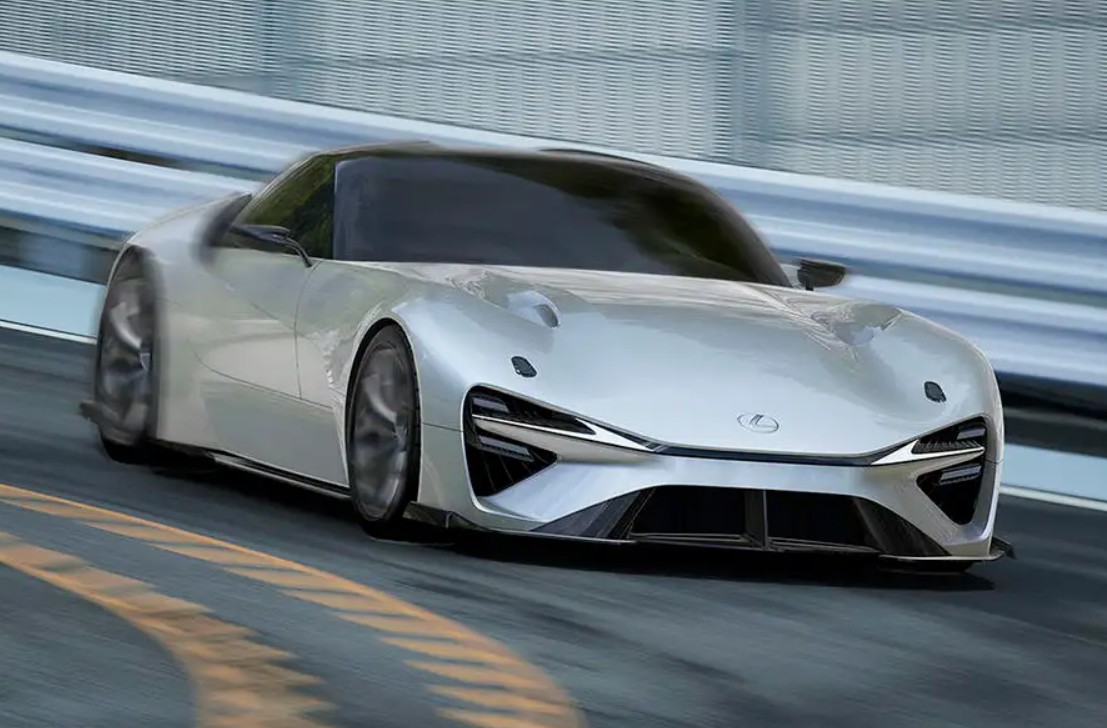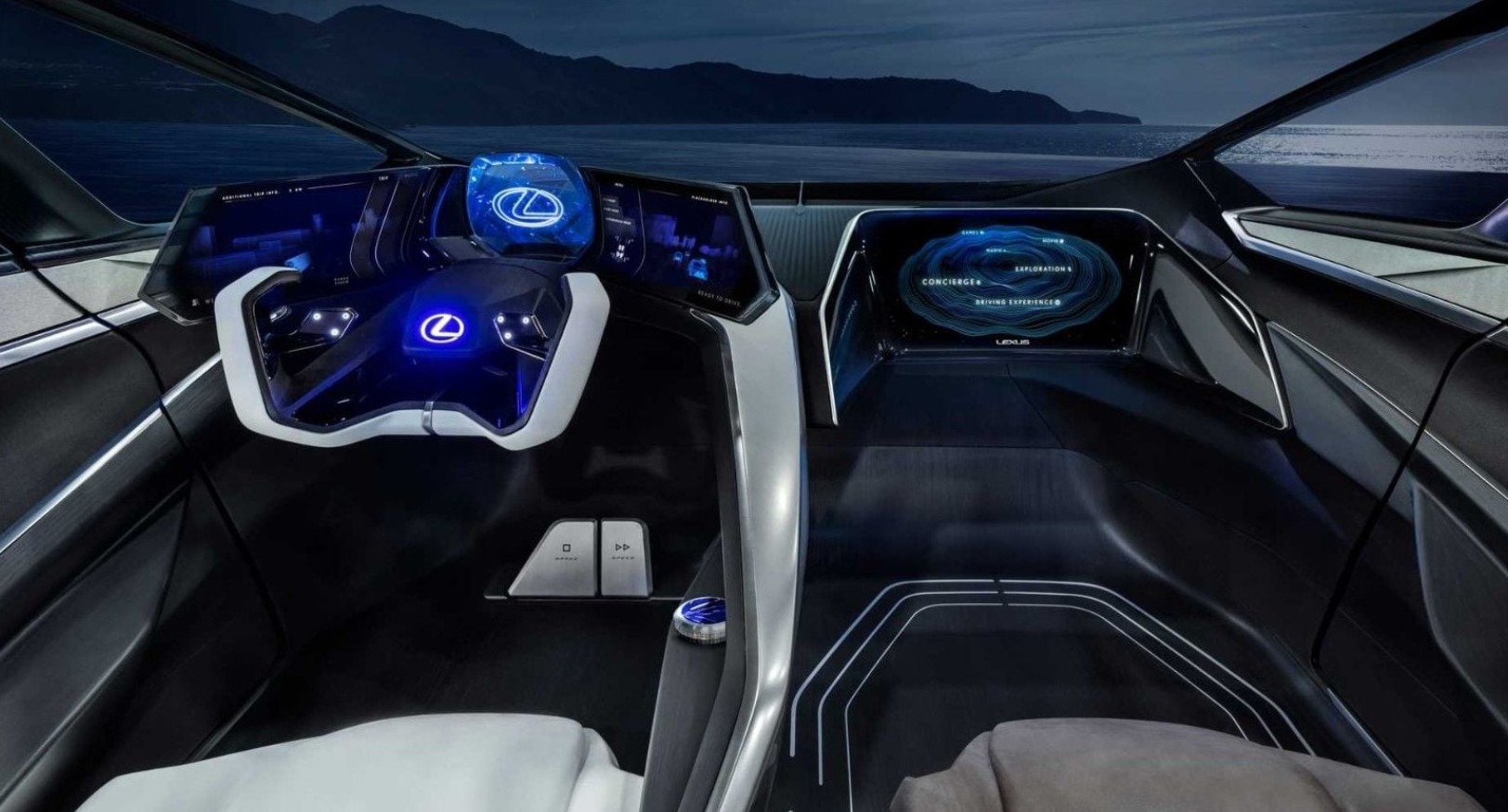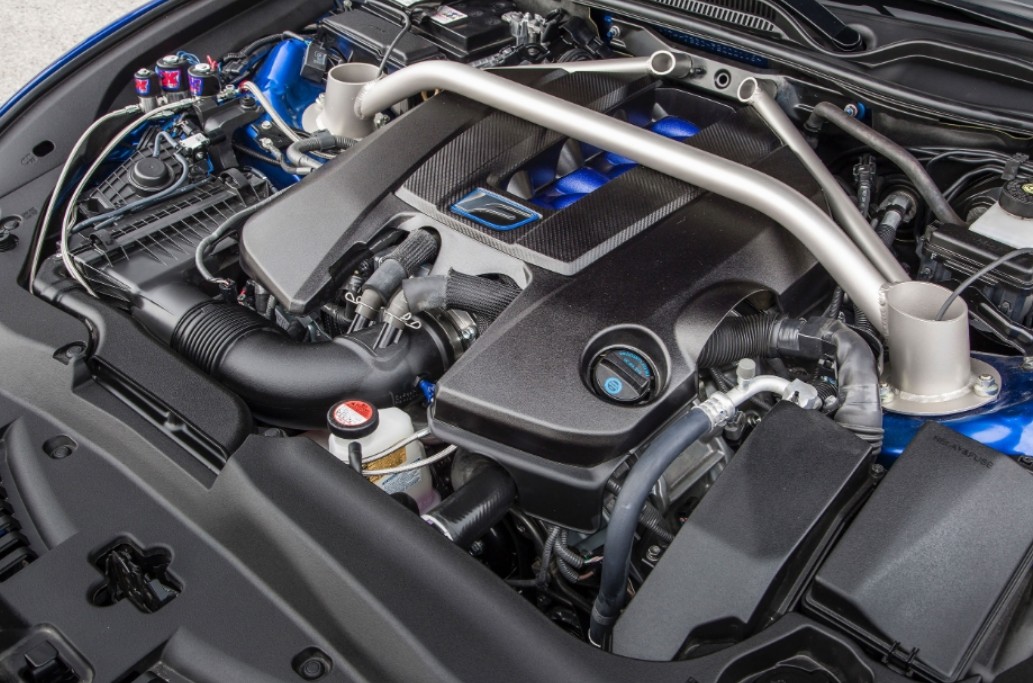New 2027 Lexus EV Supercar Review, Engine, Interior – The 2027 Lexus EV Supercar doesn’t just mark a leap forward in Lexus design—it demolishes expectations. Sculpted with the wind in mind, the low-slung silhouette blends aggression with elegance. Gone are traditional vents and scoops; instead, sleek active aero panels adjust in real-time to optimize airflow and stability.
The body is constructed from ultra-lightweight carbon-fiber-reinforced polymer, wrapped tightly around the frame for extreme weight savings without compromising strength. Every crease and curve serves aerodynamic intent, helping the EV supercar slice through the air with minimal drag. New 2027 Lexus EV Supercar Review
New 2027 Lexus EV Supercar Redesign and Update Plan
Exterior & Interior
Inside, the 2027 Lexus EV Supercar prioritizes the driver in ways the LFA never could. A floating carbon monocoque tub encapsulates the cockpit, placing every control within fingertip reach. The digital cluster, a 14.5-inch wraparound OLED display, bends seamlessly into the edges of the steering yoke, updating in real-time based on drive mode, nav routes, and energy performance metrics. Lexus’ Tazuna cockpit philosophy—driver-first layout—is taken to the extreme, creating an interface that feels more like piloting a jet than driving a car.
Ambient lighting subtly illuminates the cabin with customizable themes, while Alcantara and semi-aniline leather materials wrap every surface in hand-stitched precision. Recycled ocean plastics are woven into accent trim, blending sustainability with cutting-edge design. The seats are ultra-thin, race-derived carbon shells with adaptive bolstering that tightens under hard cornering and softens for long cruises. Dual-zone climate control, wireless Android Auto and Apple CarPlay, and an integrated AI-powered voice assistant ensure the supercar balances raw power with Lexus-level comfort.
A new 3D audio system developed with Mark Levinson uses headrest speakers, vibration panels, and directional sound zones to create a spatial audio experience customized to speed, acceleration, and environment. The center console houses a drive-selector joystick made from recycled titanium, and the infotainment interface responds to both tactile input and gesture controls. With track-inspired simplicity and future-focused features, the cabin of the 2027 Lexus EV Supercar is a masterclass in intelligent performance luxury.
The front fascia is unmistakable—an evolution of the Lexus spindle grille now reborn as a closed, illuminated panel featuring a diamond-pattern LED mesh. Flanking it are razor-thin headlights powered by laser-LED tech, delivering a futuristic glare and superior visibility. Aerodynamic wings integrate into the body with active flaps that adjust on-the-fly depending on drive mode. In the rear, a full-width OLED taillight strip dances in sync with acceleration and braking cues, while the adjustable rear diffuser and deployable wing activate automatically at high speeds to maximize downforce and handling.
Three exclusive color options debut for this flagship: Liquid Quartz Silver, Atomic Blue Pearl, and Solar Flame Red. Door handles are flush, and access is biometric—your fingerprint or face opens the cockpit. Lightweight forged magnesium wheels come standard with carbon-ceramic brake calipers color-coded to your chosen drive mode. The 2027 Lexus EV Supercar isn’t a reinterpretation of the iconic LFA; it’s a revolution that launches the brand into a new, electrified era of supercar dominance.
New 2027 Lexus EV Supercar Specs
Engine & Performance
At its core, the 2027 Lexus EV Supercar is built around a tri-motor all-wheel-drive system that delivers earth-shattering performance: 1,000+ horsepower, 0–60 mph in 1.9 seconds, and a top speed exceeding 220 mph. Each axle is independently powered, while a third motor sits on the rear axle, handling dynamic torque vectoring and drift mode capabilities. With instant torque, near-perfect weight distribution, and a center of gravity lower than any production Lexus before it, the supercar is a weapon on the road and the track.
Lexus has fitted it with a solid-state battery pack rated at 120 kWh, positioned low in the floor with integrated crash protection and fire suppression. This pack offers a real-world range of up to 480 miles under normal driving and 300 miles even under aggressive use. Thanks to 800-volt architecture, charging is lightning-fast—up to 80% in just 15 minutes using ultra-high-output DC fast chargers. The thermal management system utilizes liquid immersion cooling to prevent degradation and preserve consistent performance, lap after lap.
The suspension is a new magnetorheological setup that constantly adjusts damping force, adapting every millisecond to driving surface, weight transfer, and wheel feedback. Five selectable drive modes range from Comfort to Track+, each customizing throttle response, steering sensitivity, regenerative braking force, and wing deployment. Carbon-ceramic brakes, lightweight pushrod suspension, and a custom traction management system developed with Toyota Gazoo Racing ensure the 2027 Lexus EV Supercar isn’t just about numbers—it’s about total control, connection, and electrified excitement. New 2027 Lexus EV Supercar Review
New 2027 Lexus EV Supercar Fuel Economy
For a supercar pushing 1,000 horsepower, the 2027 Lexus EV Supercar is remarkably efficient. It scores an estimated 110 MPGe under normal driving conditions—helped by regenerative braking tech that can recover up to 35% of lost energy during deceleration. A customizable regen slider allows drivers to adjust the brake feel from soft gliding to aggressive one-pedal driving. The solid-state battery’s energy density and smart distribution system allow the vehicle to operate efficiently even under spirited use.
New 2027 Lexus EV Supercar Safety Features
Though designed to thrill, the 2027 Lexus EV Supercar doesn’t skimp on safety. It’s the first Lexus to feature Guardian Drive 2.0, a semi-autonomous system that supports high-speed emergency maneuvers. Utilizing a combination of LIDAR, radar, ultrasonic sensors, and AI prediction software, the system can anticipate potential collisions before they occur and preemptively adjust throttle, brakes, and steering. It supports hands-free cruising on pre-mapped highways and delivers full driver assistance in stop-and-go traffic and urban congestion.
Forward collision avoidance is upgraded with split-millisecond response thanks to quantum sensor arrays embedded in the bumper and windshield. These sensors detect objects with higher accuracy in fog, rain, and snow, where traditional radar struggles. Pedestrian Protection Mode enhances external alerts with visual cues in the headlamps and directional sound from underbody speakers to warn cyclists and bystanders of the car’s presence. Automatic Emergency Braking now works at speeds up to 130 mph and includes AI-predictive evasive swerving.
A full 360-degree surround camera system with AI-stitching provides a real-time composite view around the vehicle, projected directly into the driver’s HUD. Night Vision, Lane Keep Assist with real-time correction, Adaptive Cruise Control with full stop-resume, and Exit Assist come standard. The shell of the supercar uses space-grade composite crumple zones to absorb and deflect impact energy without compromising chassis rigidity. Lexus doesn’t just promise speed—it delivers safety without compromise.
New 2027 Lexus EV Supercar Release Date & Price
As for pricing, Lexus is expected to release the 2027 EV Supercar with a starting MSRP of around $195,000. Fully loaded configurations, including optional carbon aero kits, upgraded forged wheels, and custom interior trims, can push the price well past $250,000. Lexus plans to offer the vehicle in a limited run, with just 3,000 units globally in the first year. Each unit will be hand-built at a specialized production line in Toyota’s Motomachi plant—famed for assembling the original LFA.
Pre-orders open in Q4 of 2026 with deliveries beginning in summer 2027. Buyers will receive a bespoke ownership experience, including track days, personalized delivery, and priority access to future Lexus performance EVs. Lexus will also offer concierge maintenance service and performance software upgrades delivered over-the-air. With this supercar, Lexus isn’t just launching a flagship—they’re staking their claim as leaders in electric performance luxury, ready to take on Tesla’s Roadster and whatever Ferrari’s planning next. New 2027 Lexus EV Supercar Review


